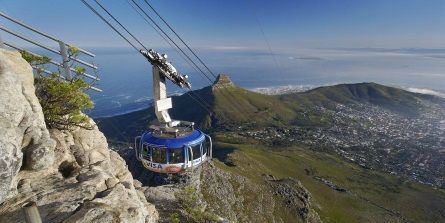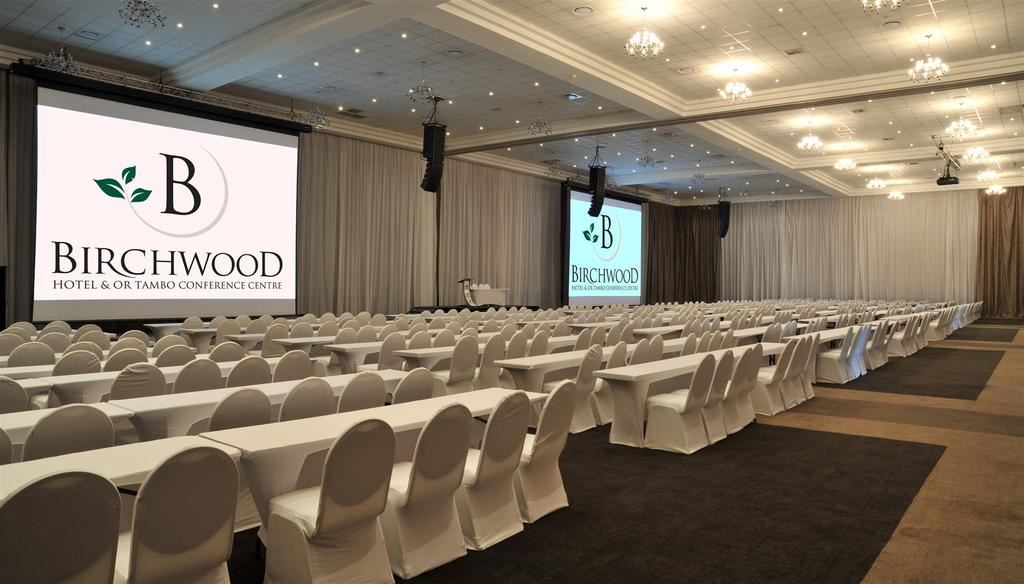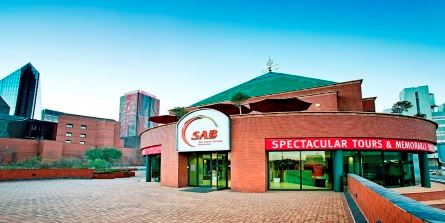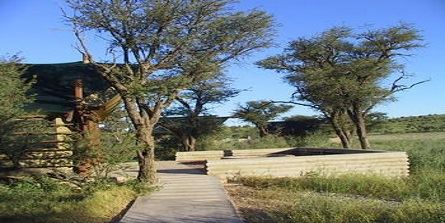Universal access is not only a right, it can also boost visitor numbers.
A significant portion of travellers have special needs, and this market is estimated to be worth billions. Yet, only a relatively small percentage of the total tourism supply is accessible.
Access tourism, says Sabine Lehmann, Chair and Founder of Attractions Africa, highlights the basic human rights of dignity and freedom to travel. Professor Dimitrios Buhalis, head of the Department of Tourism and Hospitality in the Faculty of Management at Bournemouth University in the UK, says universal access should enable access to everything for everyone at all times. This implies inclusive design and architecture as well as an inclusive attitude to support accessibility for all.
According to Buhalis, 120m Europeans have special needs, and 600m people worldwide. The spending power of the ‘disability market’ in the UK is in excess £80bn per annum. American adults with disabilities spend US$13.6bn on travel annually.
“The reality,” says Lehmann,” is that 15% of people in the world live with disabilities and with an ageing population, demand for accessible tourism products will only increase further.”
The expense of adapting attractions to special needs should be weighed against potential business gains. And how expensive it can be, depends at what point adaptations are introduced.
“When designing new structures, universal access has a very marginal cost, which is counter balanced by the opportunities it creates for new markets,” says Buhalis. Existing structures are more problematic and challenging and more expensive to modify, he says, although often there are cost-effective solutions. Heritage and archaeological structures are even more complex.
“Clearly, it is always advisable and more cost effective to design with universal access in mind. However, just as all attractions have rolling maintenance plans, so these can and should include budgets and plans to improve on universal accessibility,” says Lehmann. “The most cost-effective starting point, and the point with the largest impact, is training all your staff to understand what universal accessibility is and to understand how they can help with a range of disabilities, mobility issues and access issues.”
Special needs are very diverse and complex and extend beyond travellers in wheelchairs to include parents pushing prams, pregnant women and those with temporary conditions. Special needs encompass speech, hearing, sight, cognitive and mobility issues. They apply to the built environment, to the provision of modified equipment and to assistance technologies such as electronic braille, screen magnification, touchpads, flashing light ringers for the hearing impaired and more.
A weak point in the process of catering for travellers with disabilities is information, which is often false or out of date, scattered, difficult to retrieve by those employing assistive technologies, or not available at all. Buhalis points out that the provision of information is crucial for the special needs market to decide whether to engage in the travel process or not.
Examples of South African attractions that are successful in universal access include SANParks and the Table Mountain Cableway, says Lehmann. Buhalis has experienced universal access at Cape Town’s V&A Waterfront and in many Protea Hotels. Overland tour operator, Epic Enabled, is committed to opening up Africa to “Enable the Disabled”, he says, and Go Africa Safaris & Travel has over 20 years’ experience in creating opportunities for special-needs travellers.

In KwaZulu Natal, TKZN’s Papama Duntsula says the Durban Botanic Gardens are easily accessible by all. New facilities at Ithala Game Reserve, the Hluhluwe-iMfolozi Park and at Giants Castle and Cathedral Peak in the Drakensberg include facilities for people with disabilities. “KZN cities comply with universal accessibility elements. For example, the roads have ramps at traffic lights for wheelchairs. Transport such as the Durban City People Mover buses are wheelchair friendly,” she says.
Attractions need to constantly keep abreast of new concepts in universal access. “Talking to industry colleagues, learning from best practice, journal articles or attending industry special conferences such as Attractions Africa, is a good start,” says Lehmann.
Case studies

The Birchwood Hotel: Helen de Chalain, Birchwood Hotel’s Marketing Manager, says there is still room for improvement in universal access when it comes to the accommodation sector.
“Birchwood Hotel recognised the need for our facilities to be universally accessible many years ago and made adjustments accordingly. The hotel had the basis for a universally accessible hotel; it was built as a ground-level facility and, due to the size of the property – 52 hectares – golf carts are a standard service that our guests use on the premises.
“We then built specially designed rooms for guests with disabilities, ensured that all entrances had wheelchair ramps and that all our conference venues had appropriate toilets. We accommodate many guests with special needs every year and make it our priority to ensure that they, like all our guests, have a comfortable stay.”
De Chalain believes much is being done locally to create awareness of universal access. The National Building Regulations and Building Standards Act has been amended, she says, and outlines essential requirements that facilities must comply with for people with disabilities. “In addition, the Tourism Grading Council of South Africa has created a Universal Accessibility grading scheme for the accommodation sector, rating facilities based on access, signage and ease of general tasks for a bronze to platinum rating. In this sector, it is vital to keep up with the changes in the industry in order to stay competitive and, through these kinds of rating strategies, the field of universal access can only improve,” she says.

SAB World of Beer: According to Crystal van Helsdingen, Marketing Officer, the museum is a wheelchair-friendly facility and has large signs at the entrance and reception offering help to any visitor requiring assistance with wheelchairs. Two large parking bays are marked for drivers with disabilities near the entrance, and elevators, ramps and a bathroom fitting wheelchairs are provided. Crutches and a wheelchair are also available on site.
Following the recent visit by a deaf tourist without a sign language guide, the museum now makes scripts available on its tours.
Van Helsdingen says crucial to a best practice blueprint is respect, and research to obtain an understanding of special needs.

SANParks: According to Chris Patton, Content Manager: Visitor Management and Interpretation, estimates of the number of South Africans with a significant level of disability range from 8%-20%. “That is a lot of people,” he says, “it is little wonder that global studies into accessible tourism indicate that providing accessibility will boost the tourism market by a minimum of 15%.”
The market, he explains, is enhanced by a multiplier effect of friends, families and carers who travel with people with disabilities.
SANParks, with its parks spread countrywide in diverse environments that include bushveld, arid areas, coastal and mountainous locations and forests, has a variety challenges to overcome. While Patton openly admits the organisation has some way to go to achieve full universal access, it has taken great strides in making its parks more usable for travellers with special requirements.
Today there are over 130 accommodation units in SANParks’ parks with ramps and ablutions for guests with mobility impairments. This accounts for 6% of the total accommodation, with the minimum target being 10%. Accessible facilities are further provided at hides, on boardwalks and nature trails, at picnic sites, interpretive centres, restaurants and campsite facilities.
Universal access is a key component of SANParks’ responsible tourism plan, from which a detailed protocol and implementation plan were developed. The protocol spells out standards of compliance, quantity of accessible facilities, customer care, information provision and marketing for guests with disabilities, monitoring and evaluation.
For the visually impaired, SANParks provides some tactile exhibits, audio descriptions, sound booths and listening locations, but plans to expand all these. Subject to veterinary requirements, guide dogs are permitted into parks. Hearing induction loop technology at suitable locations, telecommunications devices, sign language speakers and printed information are some of the measures that need to increase to better assist hearing impaired guests.
Persons on state disability pensions can take advantage of a disability pensioner discount, which offers 40% off in out-of-peak periods. Conservation fees are waived for group visits of recognised disability institutions and schools. Special educational and other events are held for people with disabilities, such as the annual West Coast National park wheelchair half-marathon.
Patton acknowledges that some factors make the provision of universal access slower than it could be, such as the remoteness of some parks, maintenance and supply chain issues, staff who have not been sensitised to the special needs of guests with disabilities, and therefore are not respectful of those needs, and environmental challenges.
“SANParks has done much to provide levels of universal access in the parks,” says Patton, “but must do more to address our deficiencies, work with the disability sector and expand our accessibility product to make the parks accessible to all people, and hence something they can be proud of, regardless of their physical, sensory or cognitive abilities.”






















